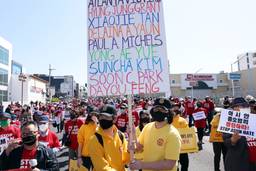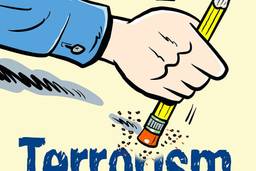The Numbers Show We Need Action to Stop Anti-Asian Violence
The Senate passed a bill to combat hate crimes in response to the rise in anti-Asian violence. It’s a first step—but there’s much more work to be done.
Clara Liang

On April 22, the U.S. Senate overwhelmingly passed legislation focused on addressing the wave of anti-Asian hate crimes that has swept across the country this year. The Covid-19 Hate Crimes Act, sponsored by Sen. Mazie Hirono (D-Hawaii), the first Asian American woman elected to the Senate, aims to combat anti-Asian violence by making hate crimes easier to report and establishing a role at the Justice Department dedicated to reviewing hate crimes more effectively. The legislation also includes plans for hate crime hotlines and public education campaigns to raise awareness about anti-Asian bias and discrimination.
The Senate bill comes a month after the March 16 shootings that killed six Asian women in Atlanta, which brought the issue of anti-Asian violence into the national spotlight. It is a direct response to the alarming escalation of violence against Asian Americans over the past year, spurred on by former President Donald Trump’s insistence on scapegoating Asian people and countries as the causes of the Covid-19 pandemic.
This measure marks the first legislative effort in Congress to protect Asian people since the pandemic, and the subsequent increase in anti-Asian violence, began. The bill passed with a 94-1 bipartisan vote. Missouri Republican Sen. Josh Hawley cast the sole vote in opposition, on dubious free speech grounds, claiming that “it turns the federal government into the speech police.”
“I cannot tell you how important this bill is to the AAPI community, who often has felt very visible in our country, always seen as the other. And for them to experience that kind of hatred against them,” Sen. Hirono said after the vote.
The bill will now go to the U.S. House and then to President Joe Biden, who has indicated that he is committed to signing it into law.
While this legislative action marks an important first step in responding to the rise of anti-Asian violence, many advocates say there’s more work to be done.
Hate crimes account for only a fraction of the anti-Asian incidents reported this year. Workplace harassment and discrimination, along with bullying and racist slurs in schools, require different responses. And the data shows that not all Asian American communities have been impacted equally. Asian American workers, many of whom are deemed “essential,” have faced lingering unemployment in the pandemic recession alongside the rise in violence, and women have reported anti-Asian incidents at a far higher rate than men. A comprehensive response to the problem of anti-Asian violence must take into account the intersectionality of the Asian American experience and the various ways the Asian American community has been affected by the pandemic.
These 11 numbers point to the continued need for efforts aimed at protecting and supporting the Asian community, particularly its most vulnerable members.
3,795 anti-Asian violence, discrimination and hate incidents were reported by Stop AAPI Hate between March of last year and February of this year
149% more anti-Asian hate crimes occurred in 2020 than 2019 in the nation’s 16 largest cities, despite overall hate crime numbers dropping 7%
2/3+ of harassment and hate incidents against Asian people were reported by women this year
27% of Pacific Islander and Asian American women are considered essential workers
30% of Asian Americans have experienced racial slurs and jokes during the pandemic
25% of Asian American youth report being the victims of racist bullying or shunning at school this year
5 days after the coronavirus was declared a pandemic, former President Donald Trump started saying “Chinese Virus” on Twitter
8,351% more Twitter users posted with #chinesevirus the week after Trump started using it
10 Chinese immigrants entered the United States, total, in 1887, five years after the Chinese Exclusion Act of 1882; in 1882, that number was 39,500
1,400,000+ Pacific Islander and Asian American women work in jobs with a median hourly wage of less than $15
50% of unemployed Asian American workers, approximately, had been out of work for six months by the end of 2020, the highest long-term rate of any racial demographic
Clara Liang is a writer based in San Francisco and Assistant to the Managing Editor at In These Times. She recently graduated from Carleton College with a degree in American Studies and Race, Ethnicity, and Indigeneity Studies.









